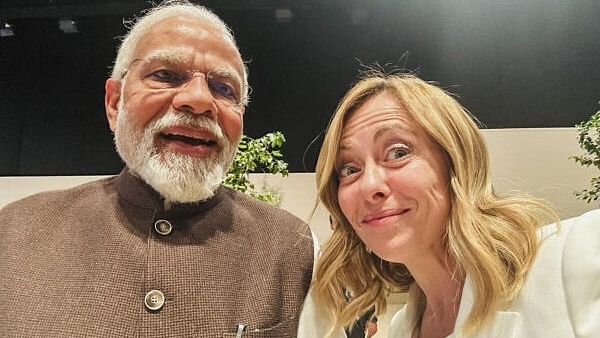
Indian PM Narendra Modi (left) with Italian PM Giorgia Meloni (right).
Credit: PTI Photo
On December 6, Italy withdrew from China’s Belt and Road Initiative (BRI). Italy joined the BRI in 2019, becoming the first G7 country to join the initiative. There was a lot of hope within Italy that the BRI would help boost the economy as well as trade and development. However, four years later, China trades more with Germany and France which are not BRI signatories.
The signs of trouble were obvious for some time now. As with most of the projects under the BRI, only a part of the promised 20 billion euros was invested. There were also signs that the Chinese gained more by getting access to Italian markets, while there was hardly any improvement in Italian trade figures. In July, the Italian defence minister made a statement that the decision to join the BRI was “improvised and atrocious”. The Italian withdrawal is a major dent to the BRI’s global image and acceptance. Another point which needs highlighting is that Italy will be assuming the presidency of the G7 in 2024.
To add to China’s European woos, the Italian withdrawal comes close on the heels of the recently-concluded China-EU summit in Beijing. No surprise that during the summit China’s President Xi Jinping asserted that “China and Europe should not engage in confrontation due to their different political systems”. The major focus was talks to correct the trade imbalances and also to limit the European Union (EU)’s current dependence on Beijing for critical materials.
The Chinese side even sounded a soft ultimatum. In the words of China’s foreign ministry director-general for European affairs Wang Lutong, if the EU imposes sanctions on Chinese companies, Beijing will not hesitate to respond. However, the general perception is that the EU is expecting a lot if it believes that Beijing is going to make efforts to correct the existing challenges. The trade imbalances are in China’s favour, and China is among the EU’s largest trading partners.
What makes these developments interesting is that the Italian decision is being perceived as a pro-India move, as New Delhi has been consistently critical of the BRI. India has been unswerving in its criticism of the BRI with respect to debt traps and disregarding India’s territorial sovereignty.
A newspaper article by Vincenzo De Luca, the Italian ambassador to India and Nepal, on December 7 — a day after Italy left the BRI — underscoring the growing closeness between India and Italy, with respect to trade, defence, energy, and space lends more credibility to such perceptions.
De Luca asserts that Italy is keen to undertake a prominent role in the Indo-Pacific and be pivotal to the India-Middle East-Europe-Economic Corridor (IMEC). With respect to India-Italy ties says that “[T]he partnership is rooted in a common view of the strategic challenges in today’s world and the approach to face them”. Does this show a growing acceptance of India’s long-held views on the BRI? The growing India-Italy ties also raise the question of Rome’s decision on BRI indicating its general geopolitical realignment in the region.
Italy’s exit has added another major dent to Xi’s projection that the BRI is a win-win for partner nations. Even economically smaller nations are revisiting projects under the BRI. Beijing has been accused of furthering its geopolitical ambitions, for example through the Hambantota port in Sri Lanka, further complicating how the BRI is seen.
No surprise that the Chinese Foreign ministry without directly pointing at anyone (particularly Italy) made statements which argued that what was happening was a smearing campaign, it was undermining co-operation on the joint construction, and it created “confrontation and division”.
Italy’s exit can motivate other BRI partner nations to not renew or restructure current projects. In just a decade the BRI seems to have peaked and waned, and, thus, affecting China’s global image. Italy’s exit from the BRI and Rome’s leaning towards New Delhi indicate a soft win for India’s foreign policy.
(Gunjan Singh is Assistant Professor, OP Jindal Global University.)
Disclaimer: The views expressed above are the author's own. They do not necessarily reflect the views of DH.